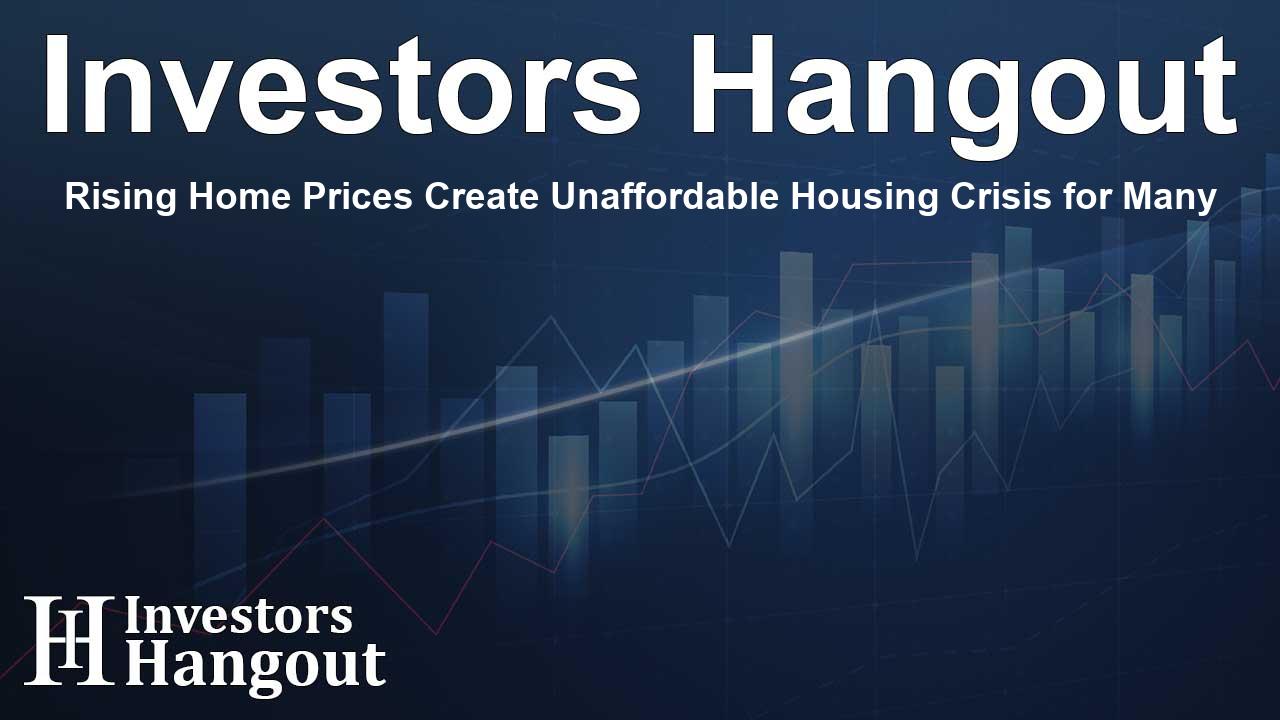Rising Home Prices Create Unaffordable Housing Crisis for Many

Rising Challenges in Home Affordability Across the Nation
Homeownership is becoming increasingly out of reach for many Americans due to the combination of rising market prices and stagnant wages. Recent studies indicate that in a vast majority of counties, home expenses are looking unmanageable for the average resident. In fact, a staggering 99 percent of counties analyzed reported that the financial burden of purchasing median-priced homes and condos had worsened compared to historical averages.
Current Home Prices and Financial Statistics
As of the latest findings, the median national home price has skyrocketed to $369,000, a record high that reflects the ongoing upward trend in housing costs. Significantly, expenses related to homeownership, including mortgage payments and property taxes, now consume approximately 33.7 percent of the average American's annual income. This is a notable increase from just a few months prior when the proportion was around 32 percent, exceeding the recommended limit set by financial experts.
The Impact on Buyers and Homeowners
This situation has left many potential buyers in a precarious position. Home prices often increase faster than wages, creating a squeeze that limits purchasing power. The average rate for a 30-year fixed mortgage has hovered around 6.82 percent, persisting at levels that continue to pressure future homebuyers.
Long-Term Trends Affecting Wage Growth
Over the past few years, the cost of purchasing a home has soared approximately 55.7 percent since early 2020. During the same period, wages have only risen by 26.6 percent. Consequently, for families considering homeownership, the financial feasibility remains a daunting challenge. Current measures show that in 77.9 percent of the counties under observation, homeownership expenses exceeded 28 percent of typical wages, a threshold typically regarded as affordable.
Regional Differences in Affordability
Some regions have fared worse than others, particularly populous areas where homeownership costs have surged disproportionately compared to wages. The most affected regions include several major counties known for their high population density, where typical expenses far exceed what residents can comfortably afford.
The Continuing Growth of Homeownership Expenses
An interesting trend is that homeownership expenses, which encompass critical aspects like mortgage payments, insurance, and taxes, have increased quarter over quarter in around 83.1 percent of the counties analyzed. In fact, the typical monthly outlay for homeowners in the second quarter of the year was around $2,125, reflecting a 5 percent increase from the previous quarter.
Is There Any Hope for New Buyers?
Though the current market poses challenges, there are areas where home expenses are relatively more manageable. In certain counties, the proportional cost of homeownership remains below the 28 percent guideline. These areas provide a glimmer of hope for potential buyers, demonstrating that opportunities still exist for those willing to explore various locations.
Looking Ahead: Navigating the Home-Buying Landscape
As we move forward, the critical question remains: how can prospective buyers navigate an increasingly difficult market? With housing costs projected to grow and wages lagging, individuals must explore alternative strategies, whether that means seeking out lesser-known areas with more favorable market conditions or considering cooperative buying arrangements.
Confronting the Realities of Home Affordability
The harsh reality for many is that homeownership currently demands an income of over $91,066 annually in order to secure a median-priced residence. This is a stark contrast to the average wage nationwide. As more buyers enter the market, those on the lower end of the wage spectrum could find themselves increasingly priced out of homeownership altogether.
Frequently Asked Questions
What is the current median home price in the U.S.?
The current median home price in the U.S. is reported to be $369,000.
How much of an average American's income goes to housing?
Approximately 33.7 percent of an average American's income is consumed by housing expenses.
Are home prices increasing faster than wages?
Yes, home prices have been increasing at a rate that surpasses wage growth in many regions.
What percentage of counties face unaffordable home expenses?
Currently, 77.9 percent of counties report home expenses that exceed typical wage recommendations.
What is the recommended maximum for housing expenses as a percentage of income?
The maximum recommended percentage for housing expenses is typically 28 percent of an individual's income.
About The Author
Contact Dominic Sanders privately here. Or send an email with ATTN: Dominic Sanders as the subject to contact@investorshangout.com.
About Investors Hangout
Investors Hangout is a leading online stock forum for financial discussion and learning, offering a wide range of free tools and resources. It draws in traders of all levels, who exchange market knowledge, investigate trading tactics, and keep an eye on industry developments in real time. Featuring financial articles, stock message boards, quotes, charts, company profiles, and live news updates. Through cooperative learning and a wealth of informational resources, it helps users from novices creating their first portfolios to experts honing their techniques. Join Investors Hangout today: https://investorshangout.com/
The content of this article is based on factual, publicly available information and does not represent legal, financial, or investment advice. Investors Hangout does not offer financial advice, and the author is not a licensed financial advisor. Consult a qualified advisor before making any financial or investment decisions based on this article. This article should not be considered advice to purchase, sell, or hold any securities or other investments. If any of the material provided here is inaccurate, please contact us for corrections.
